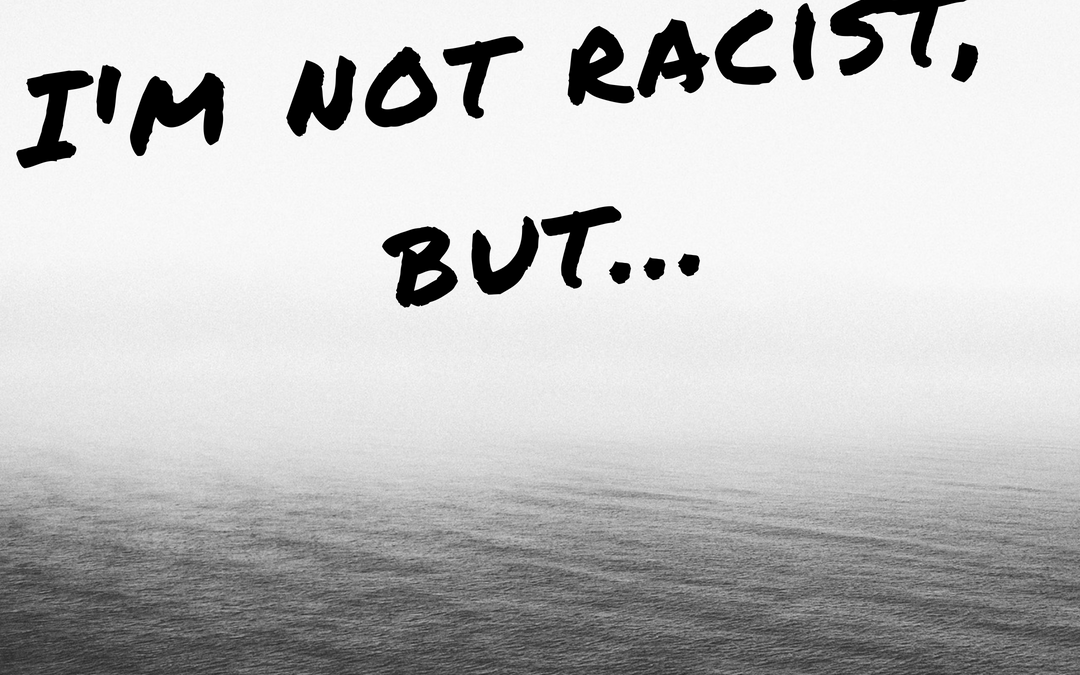Karlie Rose Pogson, 2018
When Australian Olympic skier Jacqueline Cooper complained that all Chinese athletes “look the same” you might have been appalled. Or perhaps it was the treatment by Australian cricket fans of England’s batsman Moeen Ali that prompted you to outrage? You would never even think like that! But recent research in psychology suggests that more of us are racist than we realise (Ito et al, 2015).
Making sense of underground racism
The persistent presence of racism in post-colonial societies has led many to wonder how we can change this seeming status quo. A study by Payne (2005) from Ohio State University found that even amongst those who hold egalitarian views, racism persists. Our unconsciously held beliefs and stereotypes can be at odds with our conscious ones, only appearing when we are vulnerable. For example, Bartholow, Dickter & Sestir (2006) from the University of North Carolina conducted a study showing that the more alcohol an individual drank, the less they were able to control their prejudice. Rather than alcohol making us racist, this suggests our prejudice is normally in hiding. Think of it as our racism going underground. When it appears it can be without our awareness. Unfortunately, another study showed that those we are interacting with are definitely aware, even if we aren’t (Dovidio, Kawakami & Gaertner, 2002). So why do we act against our own intentions, and can we can do anything about it?
Research suggests that there are two different kinds of racial bias (Ito et al., 2015). The more obvious racism is explicit bias. This is the main cause of obviously prejudiced behaviour, such as sharing racist views. The other kind of racial bias is known as implicit bias (Dovidio et al., 2002). It’s less obvious.
Implicit bias means holding unconscious racial stereotypes. They could be positive, like “white people can be trusted,” or negative, like “young black men are aggressive.” We all believe and act on stereotypes without even realising. Although the stereotypes we hold will vary depending on who our family and friends are and the groups we identify with, our larger culture also plays a role (Gonsalkorale, Allen, Sheman & Klauer, 2010). Although the stereotypes that we believe in are automatic, meaning we don’t have a lot of control over them, new research is starting to show that even when we hold these beliefs the way we act is not inevitable (Ito et al., 2015) and our stereotypes can be changed (Rudman, Ashmore & Gary, 2001).
When the going gets tough, egalitarianism suffers
Cognitive control means controlling our behaviour so it matches our values. The better we are at cognitive control, the less prejudiced behaviour we will show (Ito et al., 2015). This works fine most of the time, although when we’re under pressure we’re not so good at it. The 2005 study by Payne showed that when we’re busy or tired we’re more likely to make stereotype errors and negative social judgments.
Unfortunately, cognitive control is less effective for subtle prejudices like body language (Dovidio et al., 2002). Research by Amodio et al. (2008) which measured brainwaves during implicit bias tasks even suggested that certain people are genuinely less able than others to hold back their prejudice. The key difference? Wanting to do the right thing (Devine, Plant, Amodio, Harmon-Jones, & Vance, 2002, Ito et al., 2015).
It turns out that wanting to look good to others (external motivation) isn’t so effective. Research by Ito et al. (2015) from the University of Colorado Boulder showed that you’re less likely to act egalitarian during those tired, stressful moments if you don’t mean it. In fact, feeling forced to act this way may even be increasing your bias (Amodio et al., 2008). However, if you genuinely believe that everyone should be treated equally (internal motivation) you’re probably doing better, and improving as well (Devine et al., 2002).
Most of this research on racism is based in America. The United States and Australia are dealing with very different histories of racist oppression, and it would be fair to ask whether studies of Americans can really be applied Australians?
A study of bystander behaviour in Australian adults found that those with internal motivation to act fairly were more likely to say they would help if they saw an Indigenous Australian experiencing racism (Redmond, Pedersen & Paradies, 2014). Indigenous Australians as a group are significantly disadvantaged compared to non-indigenous Australians in a range of areas from life expectancy to unemployment. These researchers suggested that if more of us stood up for victims and challenged racist attitudes, then we could eventually change what is seen as normal and make Australia a fairer place.
Three steps to conquering your implicit bias
We’ve established racism is still a problem, now what’s the solution?
- Believe you can change:
The first step is believing that you can change. People who believe that they can learn, do learn. If you think you may have acted with prejudice have a conversation about it. Asking questions and trying again are good ways to match your behaviour to your good intentions (Neel & Shapiro, 2012).
- Educate yourself:
Volunteering to participate in education around the issues is also helpful (Rudman et al., 2001). Listen to the information presented and think carefully about it if you want to experience the biggest change (White, Charles & Nelson, 2008). And if you’re working to convince others as well, stick to the positives and encourage deep thinking on their part as well.
- Make new friends:
Finally, and most powerfully, open up your friendship group. Go out of your way to get to know a diverse range of people. As you get to know more people who defy your stereotypes, your unconscious beliefs will begin to change for the better (Gonsalkorale et al., 2010).
The best news is that the more you practice, the easier it gets (Gonsalkorale et al., 2010). If you suspect you’re a bit externally motivated, know that you’re on the right track. Practice behaving in a way that matches your values and your behaviour will become more automatic (Ito et al., 2015). This means that eventually, you won’t even need cognitive control to do the right thing, it will come naturally (Payne, 2005).
Racism has not disappeared, either in America or in Australia. Although more obvious examples of discrimination are becoming less common, people in minority groups still experience a lot of implicit prejudice. The good news is change can start with you. Take the time to reflect on your own beliefs and behaviours, then get outside your comfort zone and go make some new friends.
References
Amodio, D., Devine, P., & Harmon-Jones, E. (2008). Individual differences in the regulation of intergroup bias: The role of conflict monitoring and neural signals for control. Journal of Personality and Social Psychology, 94(1), 60-74. doi:10.1037/0022-3514.94.1.60
Bartholow, B., Dickter, C., & Sestir, M. (2006). Stereotype activation and control of race bias: Cognitive control of inhibition and its impairment by alcohol. Journal of Personality and Social Psychology, 90(2), 272-287. doi:10.1037/0022-3514.90.2.272
Devine, D., Plant, A., Amodio, D., Harmon-Jones, E., & Vance, S. (2002). The regulation of explicit and implicit race bias: The role of motivations to respond without prejudice. Journal of Personality and Social Psychology, 82(5), 835-848. doi:10.1037//0022-3514.82.5.835
Dovidio, J., Kawakami, K., & Gaertner, S. (2002). Implicit and explicit prejudice and interracial interaction. Journal of Personality and Social Psychology, 82(1), 62-68. doi:10.1037//0022-3514.82.1.6
Gonsalkorale, K., Allen, T., Sherman, J & Klauer, K. (2010). Mechanisms of group membership and exemplar exposure effects on implicit attitudes. Social Psychology, 41(3), 158-168. doi:10.1027/1864-9335/a000023
Ito, T., Friedman, N., Bartholow, B., Correll, J., Loersch, C., Altamirano, L., & Miyake, A. (2015). Toward a comprehensive understanding of executive cognitive function in implicit racial bias. Journal of Personality and Social Psychology, 108(2), 187-218. doi:10.1037/a0038557
Neel, R., & Shapiro, J. (2012). Is racial bias malleable? Lay theories of racial bias predict divergent strategies for interracial interactions. Journal of Personality and Social Psychology, 103(1), 101-120. doi:10.1037/a0028237
Payne, K. (2005). Conceptualising control in social cognition: How executive functioning modulates the expression of automatic stereotyping. Journal of Personality and Social Psychology, 89(4), 488-503. doi:10.1037/0022-3514.89.4.488
Redmond, J., Pedersen, A., & Paradies, Y. (2014). Psychosocial predictors of antiracist bystander action toward Indigenous Australians. Peace and Conflict: Journal of Peace Psychology, 20(4), 474-490. doi:10.1037/pac0000062
Rudman, L., Ashmore, R., & Melvin, G. (2001) “Unlearning” automatic biases” The malleability of implicit prejudice and stereotypes. Journal of Personality and Social Psychology, 81(5), 856-868. doi:10.1037//0022-3514.81.5.856
White, F., Charles, M., & Nelson, J. (2008). The role of persuasive arguments in changing affirmative action attitudes and expressed behaviour in higher education. Journal of Applied Psychology, 93(6), 1271-1286. doi:10.1037/a0012553



Recent Comments